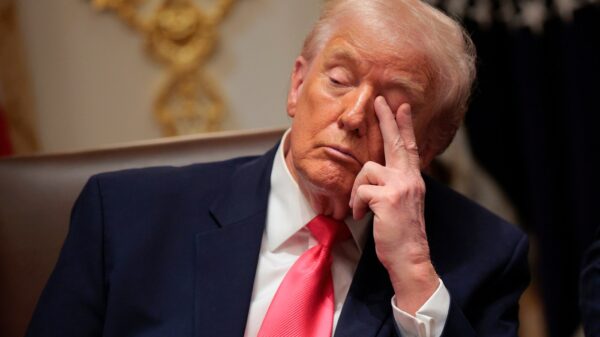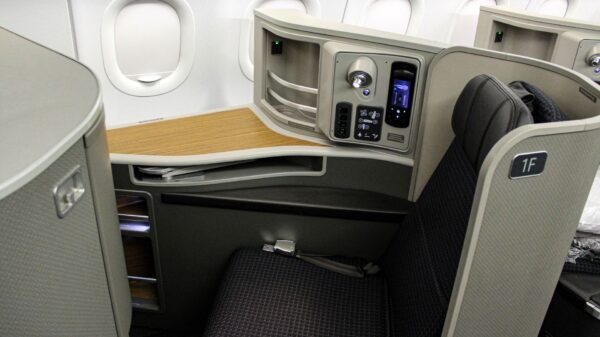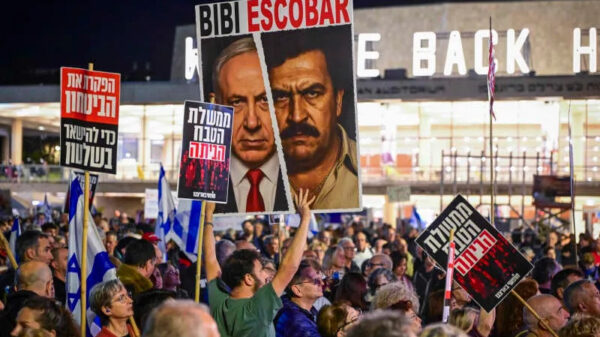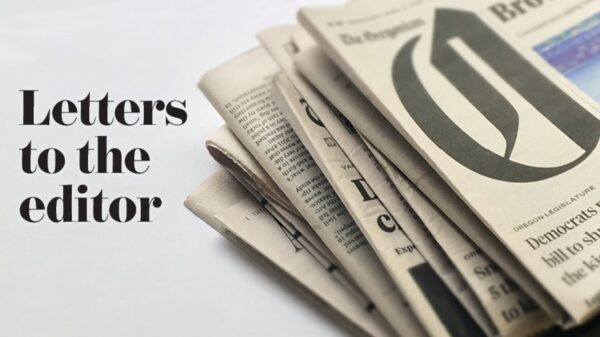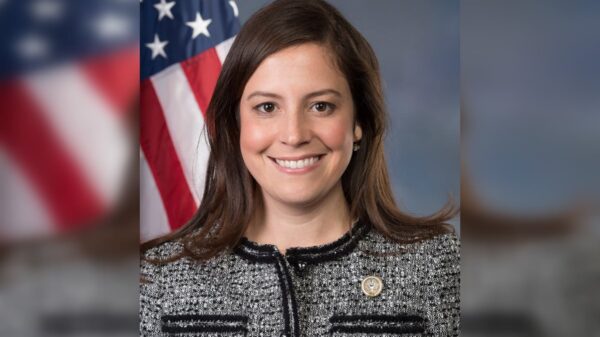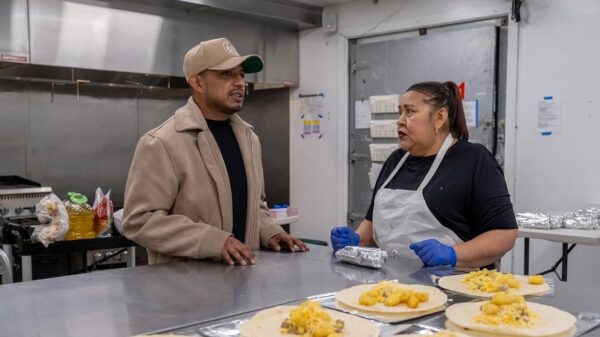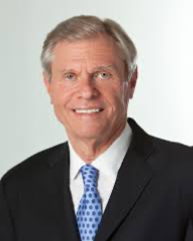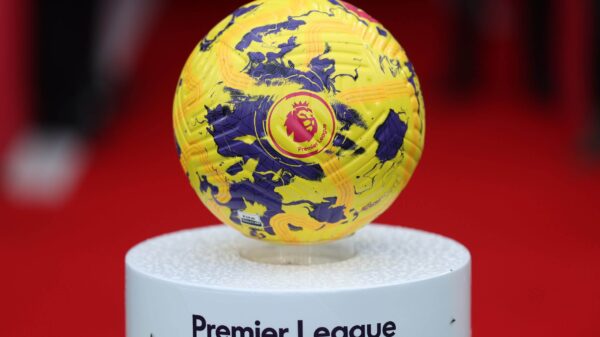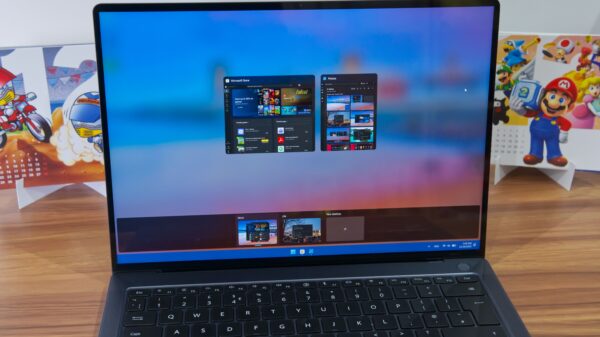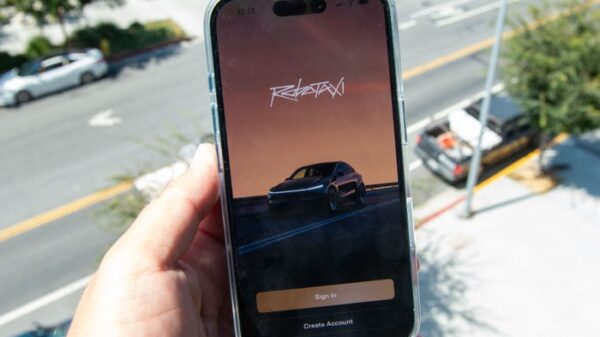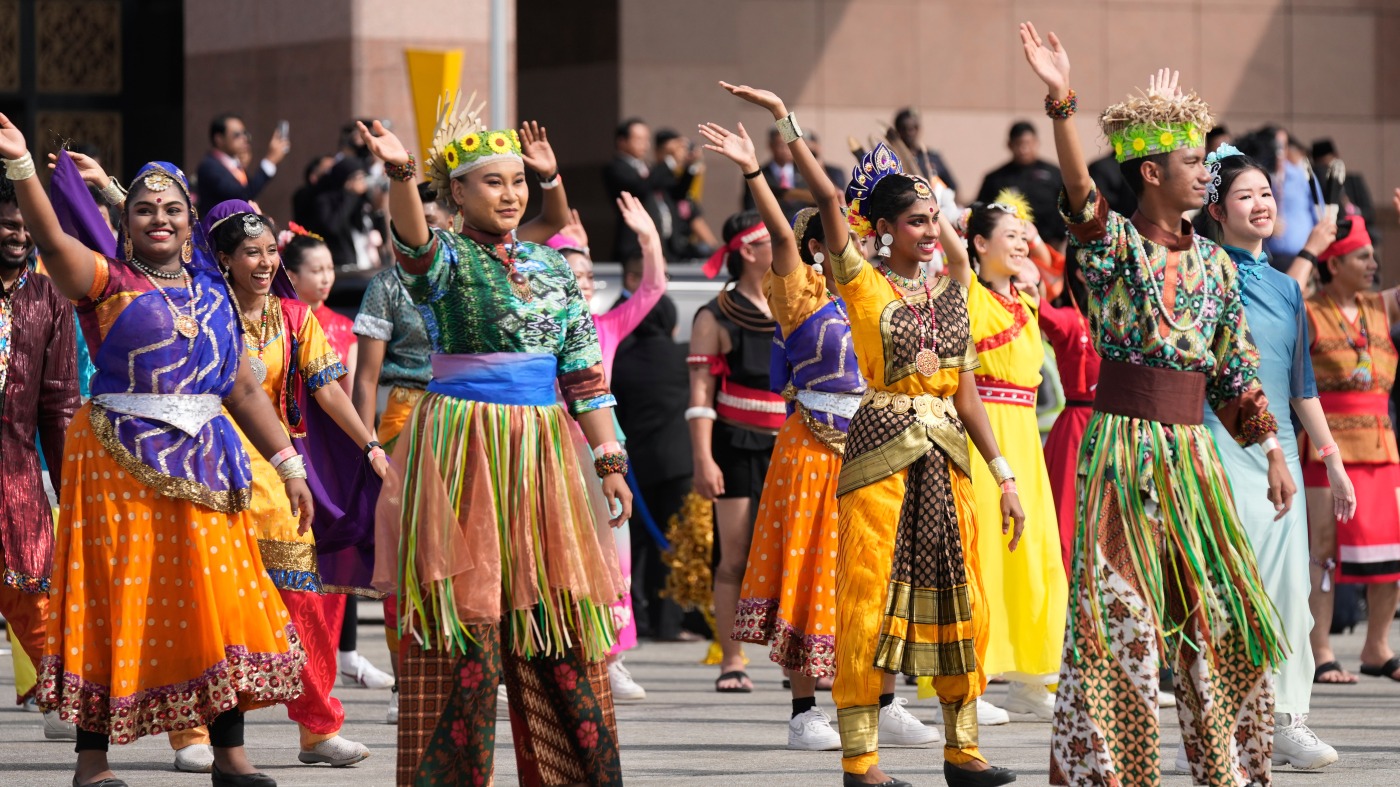UPDATE: President Trump has just returned to Washington after a pivotal week in Asia, marked by crucial trade negotiations and diplomatic gestures. The president attended the ASEAN summit in Kuala Lumpur, addressed U.S. troops in Japan, and held a significant meeting with China’s President Xi Jinping in South Korea. Here are the five most critical takeaways from this high-stakes trip.
1) U.S.-China Trade Relations Show Signs of Stability
During his flight back to Washington on Thursday, Trump announced a significant reduction in the tariff rate on Chinese exports from 57% to 47%. This 10-point drop comes as part of an agreement where Xi committed to curbing the flow of fentanyl into the U.S. The president noted that China would also resume purchasing soybeans from American farmers, a move that could alleviate ongoing agricultural distress. Additionally, China agreed to ease restrictions on rare earth exports, critical for U.S. military and technological needs, in exchange for the U.S. scaling back its own export limits for a year.
2) No Final Deal Yet
Despite the optimistic tone, Trump admitted that a finalized trade deal remains elusive. “It was an outstanding group of decisions… There wasn’t too much left out there,” Trump stated. However, he did not specify the outstanding issues that need resolution. Scheduled to visit China next April, Trump hinted at further discussions with Xi either in Washington or Florida. Experts like Dennis Wilder, a former national security official, noted that while both nations are pausing trade hostilities, the fundamental trade weapons remain.
3) A Charm Offensive to Win Allies
Trump’s diplomatic approach was characterized by a series of flattering gestures from Asian leaders. In Malaysia, nearly 100 dancers welcomed him at the airport. In Japan, he received golf clubs from late Prime Minister Shinzo Abe and was nominated for the Nobel Peace Prize by newly elected Prime Minister Sanae Takaichi. The festivities continued in South Korea, where a rendition of “YMCA” greeted him upon landing, and he was awarded Korea’s highest civilian honor, showcasing the lengths to which these nations are willing to go to foster a favorable relationship.
4) Trump Positions Himself as a Peacemaker
Contrary to his typical military-focused rhetoric, Trump aimed to highlight his role as a peacemaker during this trip. He presided over a peace agreement signing between Cambodia and Thailand at the ASEAN summit, brokered through tariff threats earlier this year. Trump remarked, “You caused me very good entertainment… but this is much more fun for me than anything.” Although he did not meet with North Korean leader Kim Jong Un, he left the door open for future discussions to address ongoing tensions on the Korean peninsula.
5) Domestic Challenges Loom as International Deals Progress
Despite the diplomatic successes abroad, Trump returned to a federal government still in shutdown mode, impacting federal workers and critical programs like SNAP. On Truth Social, he suggested utilizing the “nuclear option” to eliminate the filibuster, allowing Senate Republicans to pass a funding agreement with a simple majority. “We are in power and if we did what we should be doing, it would IMMEDIATELY end this ridiculous, country-destroying ‘SHUT DOWN’,” Trump stated, emphasizing the urgency of resolving domestic gridlock.
As the president navigates complex international relations, the impact of these developments will be felt back home. The coming weeks will be critical as negotiations with Congress continue, and the international community watches closely for further trade policy changes. Stay tuned for updates as this story continues to unfold.




